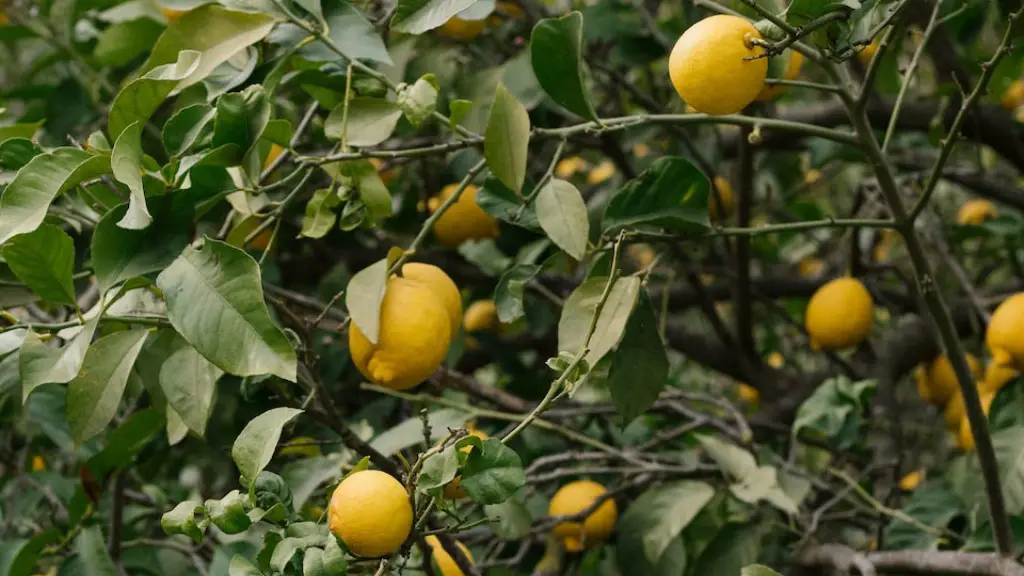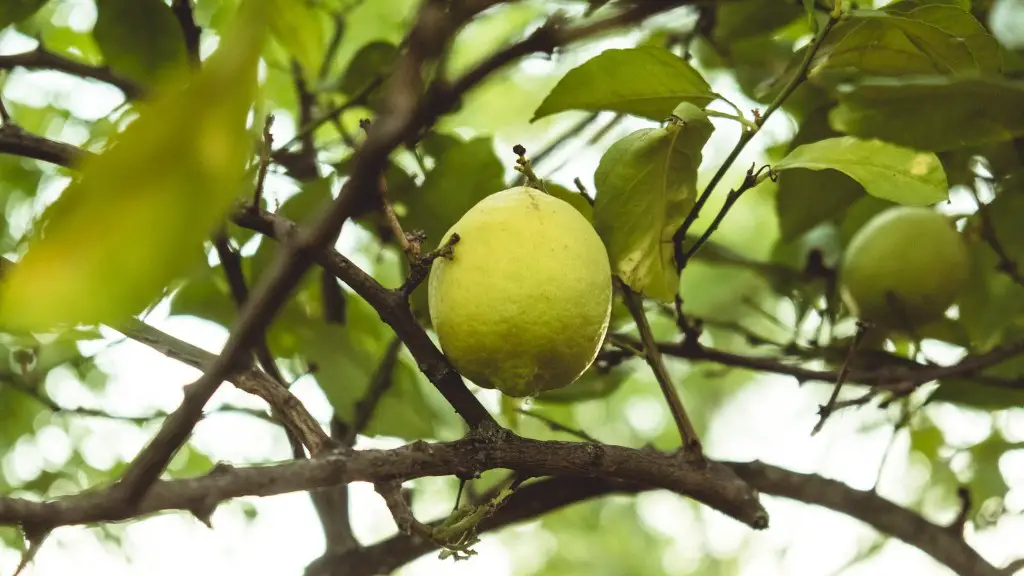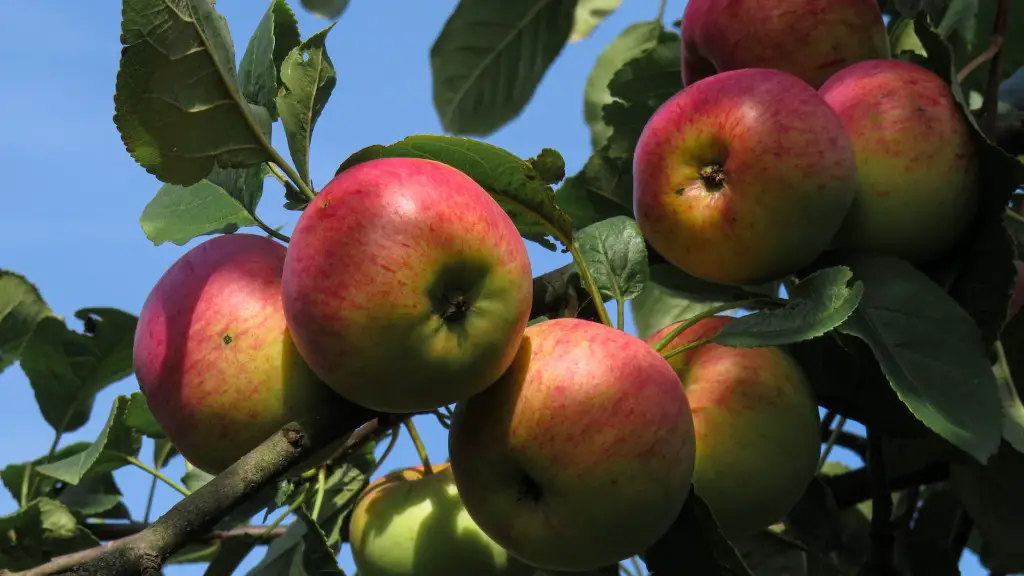The use of lemon trees as a source of decoration and flavor has become a popular choice for many home owners in the United Kingdom. Those who are interested in having this type of plant as part of their home environment may be wondering when the best time to bring it indoors is. To answer this question, it is important to know what the climate is like in the UK, as well as the health requirements of the lemon tree.
The UK climate is generally mild but can be affected by cold weather during the winter months. For areas that experience snow and temperatures below 0° Celsius, it is best to move the lemon tree into a sheltered place inside the house during the middle of October. This ensures that the plant is not exposed to any extreme temperatures. For other areas of the UK that do not normally experience snow or temperatures below 0° Celsius, the end of October is usually the best time to bring in the lemon tree.
The health of the lemon tree is also a factor in deciding when to bring it into the home. If the leaves and branches have already begun to yellow, the tree is likely already suffering from the cold temperatures outside and should be brought inside sooner. Additionally, if the leaves appear to be smaller than usual, a sudden drop in temperature may be occurring, meaning the lemon tree should be brought indoors for protection.
Finally, it is important to remember that lemon trees cannot survive inside the home indefinitely. They require long periods of light and some exposure to the elements in order to remain healthy. This means that the tree should be outside for at least part of the year. During the summer months, the lemon tree should be returned to its outdoor spot, provided the temperature is mild enough.
Light Considerations
The amount of light your lemon tree will receive should affect your decision-making regarding when to bring the tree inside. The tree should never be kept directly in a sunny spot inside, as the intensity of the light indoors is completely different than that of the sun outdoors. Place your tree in an area of your house that gets filtered sunlight, or in an unshaded part of the garden if the weather is mild enough.
The lemon tree should also receive a minimum of six hours per day of direct sunlight, even if it is inside the house. You can achieve this by placing the plant in front of a south-facing window or by using a grow light. Keep the light source at least 30 cm away from the tree, to avoid any scorching.
The intensity and duration of the light exposure should also be monitored. For most of the UK winter, the days tend to be shorter and the temperatures lower, meaning that the tree may have difficulty receiving the required light. Should this happen, you can either supplement the natural light with grow lights, or you can provide the tree with longer bouts of direct light by rotating it so that it is exposed to light from the east-facing window in the morning, and from the west-facing window in the afternoon.
Adequate Watering
It is essential that you remember to water your lemon tree correctly when it is inside. The tree may require watering more frequently in the winter months as the soil may be absorbing more moisture. Yo should also take care to water at the base of the tree and avoid saturating the soil, as this could lead to root rot. The pot should be allowed to dry out before watering again, as soggy soil can cause the tree to become water-logged.
You may also want to consider misting the leaves with a spray bottle, particularly if the air in your house is dry. This will help keep the leaves of the lemon tree looking healthy and combat dryness.
It is important to keep an eye on the condition of the tree, and if you notice any changes that may indicate that the tree is being over or under watered, it is essential to take action. Either increase or decrease the amount of water used accordingly.
Temperature Regulation
The temperature of the room your lemon tree is in should remain constant and cool throughout the winter months. The optimal temperature for your tree to feel comfortable is between 8-20°C, although lower temperatures are preferable. If your area of the UK is likely to see extreme or fluctuating temperatures, it is a good idea to place the tree in a sheltered spot such as a porch or balcony in order to protect it.
If the tree is in an area of the house that is more exposed to direct sunlight, you may need to practice temperature control measures, such as moving the tree to the shade or providing a thin curtain to reduce the temperature. This will help ensure your lemon tree does not suffer from extreme temperatures.
You can also monitor the temperature of the room or space with a thermometer and ensure the tree is moved or shaded accordingly.
Soil Considerations
The soil used with your lemon tree should be of good quality and may require repotting or replacing if the tree has been indoors for too long. The soil should also be well draining and light, so it does not become too compacted and difficult to move. If the tree has been moved too frequently in the past, it might be worth replacing the soil with new potting mix.
It is also important to keep an eye on the soil’s moisture levels and adjust them manually, rather than automatically through the use of a self-watering system or irrigation. This will ensure that the tree is not overwatered and can help protect it from developing root rot.
Finally, fertilizing your tree is important but should not be done too often. Avoid fertilizing your lemon tree for the first time until it has been moved back outside, as introducing fertilizer too early can lead to an imbalance in the soil’s nutrients.
Humidity Determination
The humidity levels of your home should also be considered when looking after your indoor lemon tree. In the winter months, the air can become very dry, making it difficult for the tree to absorb any moisture. To counteract this, you can place bowls of water around the tree, or you can use a humidifier to increase the overall humidity.
If you do use a humidifier, make sure to read the instructions and follow the safety protocols. Humidifiers that produce steam may cause burning if their output is too hot.
It is also important to note that your lemon tree may require higher humidity levels when it is placed outdoors. To prevent any damage to the tree, you should refrain from transferring it from the high-humidity environment indoors to the even lower-humidity conditions of outdoors.
Pest Control
When bringing your lemon tree indoors, it is also essential to be on the lookout for signs of pests. These can include small brown spots on the leaves or wilting of the tree if the pests are attacking the roots. To combat these, it is important to inspect the tree every few weeks and treat it with pesticide as required.
If the tree has been outdoors, you should also check to ensure that it does not have stowaways, such as spiders or woodlice, which could lay their eggs on the tree and cause further damage. If you find any unwanted guests on the tree, isolate it from other plants, remove any pests by hand, or apply an appropriate insecticide.
It is also beneficial to leave the tree outside for longer, even in cooler weather, as this can help to prevent it from developing any indoor pests.




